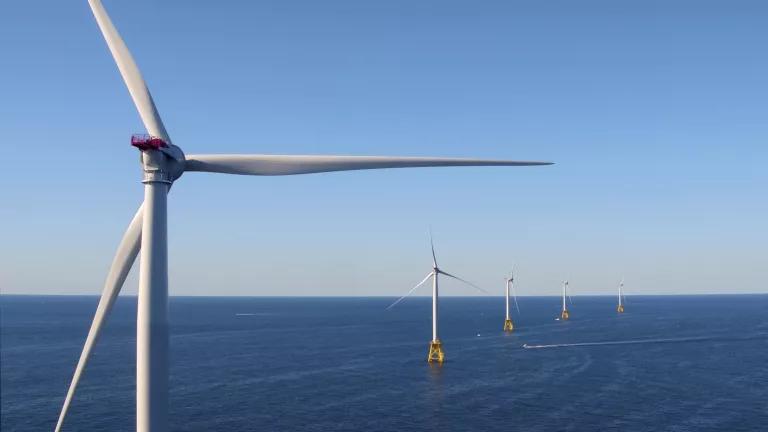Far from Basic: Action Needed to Fight Ocean Acidification
The benefit of taking comprehensive climate action isn’t just curtailing carbon dioxide emissions released into the atmosphere. Climate action also prevents excess carbon dioxide from dissolving in our ocean. This process, known as ocean acidification, needs to continue to be a part of our conversations about how to act on climate.

Ocean acidification is causing oyster mortality in the Pacific Northwest. Credit: Yaamini Venkataraman/University of Washington
President Biden’s first year in office is gearing up to be an important year for climate action in the United States and globally—this includes ocean climate action. The benefit of taking comprehensive climate action isn’t just curtailing carbon dioxide emissions released into the atmosphere. Climate action also prevents excess carbon dioxide from dissolving in our ocean. This process, known as ocean acidification, needs to continue to be a part of our conversations about how to act on climate. Leaders in Congress from the Pacific Northwest to Maine have introduced legislation to address ocean acidification—this is the type of leadership we need to see from Congress and the White House.
The Science Behind Ocean Acidification
When fossil fuels are burned, only a portion of the carbon dioxide emitted remains in the air where it drives climate change. Approximately a quarter of the carbon dioxide is absorbed by the sea where it becomes carbonic acid, increasing the acidity of our ocean waters.
Seawater can absorb so much carbon dioxide that it becomes corrosive to some shell-bearing organisms. Living in corrosive waters is just as dangerous as it sounds for many sensitive marine species. Ocean acidification makes it more difficult for organisms like oysters, clams, crabs, mussels, plankton, and corals to build the strong shells and skeletons they need to survive. Studies show that even non-shell building marine life could be stressed by the increasing acidity.
How Ocean Acidification Impacts Us
Humans are not spared from these impacts. Ocean acidification is already impacting ocean economies and livelihoods. For more than a decade, oyster farmers in Washington and Oregon have struggled with corrosive waters killing off their oyster larvae and have had to adapt their aquaculture practices in response; conditions are only predicted to get worse. The Pacific Northwest shellfish industry is estimated to be worth $270 million, and shellfish vulnerable to ocean acidification make up more than 60% of the fishery revenue for the Pacific region. Massachusetts’s marine economy is also particularly dependent on shellfish, and the fishing and seafood processing sectors employ more than 5700 individuals and generate over $300 million in annual wages. In total, the U.S. shellfish industry could lose more than $400 million annually by 2100 due to impacts of ocean acidification.
The implications of fundamentally changing our ocean’s chemistry are profound, but our ocean is resilient, and we can take action now to help it heal. Thankfully, with climate leadership in both the White House and in Congress, the U.S. has the opportunity to do just that.
What Congress Can Do
The House Select Committee on the Climate Crisis, the Senate Democrats’ Special Committee on the Climate Crisis, and congressional ocean acidification champions like Representatives Bonamici and Pingree and Senators Cantwell and Wicker have acknowledged the urgent threat of ocean acidification and are leading in calling for increased research and action. Chair Grijalva’s Ocean-Based Climate Solutions Act includes a title on ocean acidification that builds on previous ocean acidification bills and a public report on the social and economic vulnerability to ocean acidification of coastal resource-dependent communities.
The Senate Special Committee’s 2020 climate action report acknowledges that disruptions to species like “clams and oysters, potentially jeopardiz[es] thousands of fishing jobs and hundreds of millions of dollars in revenue.” Additionally, coral reefs—which are home to approximately 25% of all marine species—could entirely disappear from US waters by 2100.
As recommended in the House Climate Crisis Action Plan, the federal government can and should take action to avoid the worst of ocean acidification, through steps such as:
- Investment in increased monitoring, forecasting, and mitigation and adaptation research for ocean acidification;
- Scientific research and monitoring to understand causes of coral reef decline, including ocean acidification;
- Identification and monitoring of marine mammal species that will be harmed by climate change impacts and ocean acidification;
- Designation of NOAA as the lead agency responsible for the federal ocean acidification response; and
- Research and analyses to improve our understanding of the socioeconomic impacts of ocean acidification, especially on vulnerable communities.
In this “make or break” climate year, it’s time to tackle the complex acidification challenge so that we can continue to rely on basic ocean waters for our basic ocean needs.




